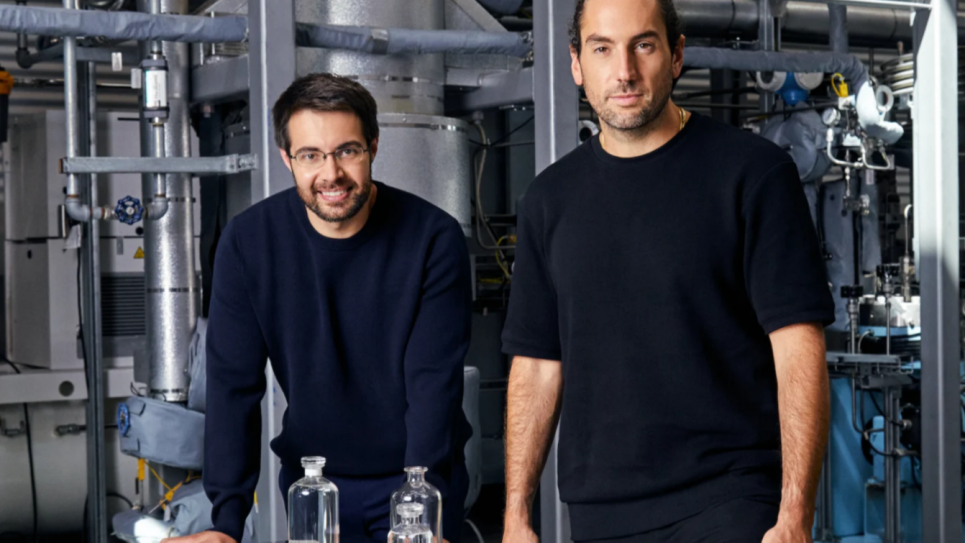HUBburger® Group Services
Log in
| admins |
| StreetTadeusza Tylewskiego 44 |
| 80-169Gdansk |
| Poland |
HUBburger® Group Services
Technology for the environment
Air Company is an excellent example of how technological innovation can have a positive impact on our environment.
Advertising

pic. pexels.com
HOW TO BE EKO?
It's amazing how much plastic we are able to accumulate in a few square meters! When you look in the bathroom cabinet, look at the edge of the bathtub you are sure to count at least a dozen, if not dozens of plastic packaging and items that will end up in the trash within the next few weeks. Completely abandoning plastic is a breakneck task, but you really are able to reduce plastic to the minimum necessary
You can make a real difference in just seven steps:
1. Buy as large a volume of cosmetics as possible.
This is the easiest way to reduce the amount of packaging thrown in the trash. Look for companies that introduce refill, that is, the ability to refill the container after used cosmetics. More and more manufacturers are realizing the need to make their packaging from recycled plastic. You can also buy many natural cosmetics in glass containers, which you can return in exchange for a discount on a new product
2. Switch to cosmetics in a cube.
Start with soap packaged in a cardboard box - it's the easiest change to make right away, and at the same time you'll already have two less plastic containers: the one for hand soap and the one for shower gel.. Taking it a step further, you can look for bar shampoos, scrubs or deodorants. There are really more and more of them, especially in online natural cosmetics stores
3. Get rid of the sponge and exfoliating glove made of plastic.
They have microfiber plastic, or polyester, in their composition! Give them up with no regrets. And so most doctors advise against using them because they quickly become a breeding ground for bacteria. Look only for natural sponges, such as the one made from the pulp of the loofah fruit. In addition to being eco, it has other benefits: it acts as a natural scrub, stimulates blood circulation, smooths the skin and is an ally in the fight against cellulite
4. Check if your pumice stone is really a pumice stone?
Light as a feather, synthetic pumice has nothing in common with the real one made of magma rock, except maybe the name. Natural pumice stone is more expensive than synthetic, but lasts longer. It also successfully replaces the foot rub, the one on a plastic handle
5. Reduce the use of disposable sticks
Their bamboo replacements, available in organic stores, are quite a bit more expensive, but this will help you start using them consciously. Several countries around the world have already banned the production of cotton buds made from plastic. This inconspicuous trinket is actually a real ton of plastic per year
6. Watch out for microbeads
It is not only the packaging of cosmetics that is important, but also what is inside. Microbeads are plastic particles less than 5 millimeters in diameter. This insidious enemy of the environment straight from the shower makes its way into the seas and oceans. Unfortunately, despite restrictions and bans on their use, microbeads can still be found in toothpastes, cleansing gels, and makeup remover cosmetics. Read labels and avoid as much as possible!
The microbeads are hidden under the names :
- Polyethylene (PE)
- Polypropylene (PP)
- Polyethylene terephthalate (PET)
- Polymethyl methacrylate (PMMA)
- Polytetrafluoroethylene (PTFE)
- Nylon
7. Don't treat the toilet like a dumpster
Hygiene products, tampons (even the eco ones!), or wet wipes should never go down the drain, only into the trash. As well as used contact lenses, which instead of going down the drain should go into the trash, specifically the plastic section (one and a half tons of contact glass waste alone goes into the Baltic Sea every year!)
Switch to eco mode, including when it comes to feminine hygiene products. These compostable ones, made only from natural ingredients, are already more and more on the market.This really makes a huge difference to the environment, because one ordinary sanitary pad can contain as much plastic as four commercials!
It's amazing how much plastic we are able to accumulate in a few square meters! When you look in the bathroom cabinet, look at the edge of the bathtub you are sure to count at least a dozen, if not dozens of plastic packaging and items that will end up in the trash within the next few weeks. Completely abandoning plastic is a breakneck task, but you really are able to reduce plastic to the minimum necessary
You can make a real difference in just seven steps:
1. Buy as large a volume of cosmetics as possible.
This is the easiest way to reduce the amount of packaging thrown in the trash. Look for companies that introduce refill, that is, the ability to refill the container after used cosmetics. More and more manufacturers are realizing the need to make their packaging from recycled plastic. You can also buy many natural cosmetics in glass containers, which you can return in exchange for a discount on a new product
2. Switch to cosmetics in a cube.
Start with soap packaged in a cardboard box - it's the easiest change to make right away, and at the same time you'll already have two less plastic containers: the one for hand soap and the one for shower gel.. Taking it a step further, you can look for bar shampoos, scrubs or deodorants. There are really more and more of them, especially in online natural cosmetics stores
3. Get rid of the sponge and exfoliating glove made of plastic.
They have microfiber plastic, or polyester, in their composition! Give them up with no regrets. And so most doctors advise against using them because they quickly become a breeding ground for bacteria. Look only for natural sponges, such as the one made from the pulp of the loofah fruit. In addition to being eco, it has other benefits: it acts as a natural scrub, stimulates blood circulation, smooths the skin and is an ally in the fight against cellulite
4. Check if your pumice stone is really a pumice stone?
Light as a feather, synthetic pumice has nothing in common with the real one made of magma rock, except maybe the name. Natural pumice stone is more expensive than synthetic, but lasts longer. It also successfully replaces the foot rub, the one on a plastic handle
5. Reduce the use of disposable sticks
Their bamboo replacements, available in organic stores, are quite a bit more expensive, but this will help you start using them consciously. Several countries around the world have already banned the production of cotton buds made from plastic. This inconspicuous trinket is actually a real ton of plastic per year
6. Watch out for microbeads
It is not only the packaging of cosmetics that is important, but also what is inside. Microbeads are plastic particles less than 5 millimeters in diameter. This insidious enemy of the environment straight from the shower makes its way into the seas and oceans. Unfortunately, despite restrictions and bans on their use, microbeads can still be found in toothpastes, cleansing gels, and makeup remover cosmetics. Read labels and avoid as much as possible!
The microbeads are hidden under the names :
- Polyethylene (PE)
- Polypropylene (PP)
- Polyethylene terephthalate (PET)
- Polymethyl methacrylate (PMMA)
- Polytetrafluoroethylene (PTFE)
- Nylon
7. Don't treat the toilet like a dumpster
Hygiene products, tampons (even the eco ones!), or wet wipes should never go down the drain, only into the trash. As well as used contact lenses, which instead of going down the drain should go into the trash, specifically the plastic section (one and a half tons of contact glass waste alone goes into the Baltic Sea every year!)
Switch to eco mode, including when it comes to feminine hygiene products. These compostable ones, made only from natural ingredients, are already more and more on the market.This really makes a huge difference to the environment, because one ordinary sanitary pad can contain as much plastic as four commercials!
If you think this is an interesting article, it will be my pleasure if you share it with others.
Greetings
| Maja Wirowska |
| Maja Wirowska |
| Street |
- Share
tags
Recent
Health
Meditation and working with one's own mind is an ancient practice that has thousands of years of roots in many cultures and traditions.
Business
HUBburger.com CEO Maciej Sagal in an interview with The Birb Nest channel
The festival season can be seen around the corner, but at this event, in addition to the excitement of performances by Polish hip-hop stars - you will also be able to enjoy activities in a special hemp zone HUBburger.com
top3
Health
Author
| Justyna Moraczewska |
| Justyna Moraczewska |
| Street |
Date of publication 2023-02-10
Ecology
Author
| Monika Sobczak |
| Monika Sobczak |
| Street |
Date of publication 2023-02-10
Health
Author
| Monika Sobczak |
| Monika Sobczak |
| Street |
Date of publication 2023-02-15
Eco-friendly detergents, soaps and powders are a green alternative
Health
Author
| admins |
| Hanna Wolska |
| StreetTadeusza Tylewskiego 44 |
| 80-169Gdansk |
| Poland |
Date of publication 2023-01-10
New research leaves no doubt
Future
Author
| admins |
| Hanna Wolska |
| StreetTadeusza Tylewskiego 44 |
| 80-169Gdansk |
| Poland |
Date of publication 2023-01-09
Ecology
Author
| admins |
| Hanna Wolska |
| StreetTadeusza Tylewskiego 44 |
| 80-169Gdansk |
| Poland |
Date of publication 2023-01-09
Advertising
Recommended
Business
Web3/NFT project through which users receive casback in the form of tokens for purchases from subscribed vendors
Health
Protein powder is one of the most popular supplements used for weight loss and sports activities. Protein is essential for both building muscle mass and burning fat. Vegan proteins are becoming increasingly popular, among them proteins derived from hemp seeds. The easiest method of protein supplementation is a delicious and nutritious shake that you can quickly make and take with you wherever you want.
News
Oslo will have world's first all-electric public transport system. In the race for a better environment and population health, Norwegians are on the final straight.
News
Oslo will have world's first all-electric public transport system. In the race for a better environment and population health, Norwegians are on the final straight.
Podcast
We have selected for you the most interesting, in our opinion, episodes of podcasts on the subject of hemp, but not only. We also reserve space here for our audio production, which is slowly sprouting in our editorial office.


































Comments